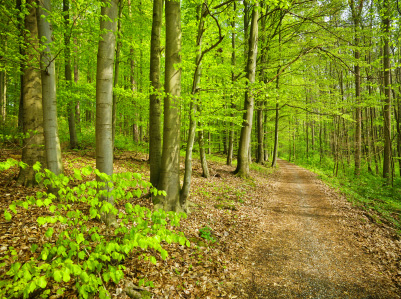Stratification Protocols for Milkweed species sold on Etsy
The information contained here is based on information taken from selected reference books, internet sources and our own growing experience. Our goal is to give you enough information so that you can give your seeds the requirements they need to overcome dormancy and thus germinate. Some species are relatively easy; they require no stratification at all or just a couple of months in moist soil in the fridge. It’s these species you don’t see too often in the trade because they aren’t quick to grow and that discourages nurserymen from growing them. Many of these are beautiful plants that deserve a place in our landscapes and chances are some insect or other animal uses the leaves or fruit for food so that makes them valuable to us and to wildlife.
Please note that not all seeds will germinate. Our MilkweedOne seeds are the same ones we use to grow milkweeds and some seeds times turn out to be duds. There is not a good way to determine whether the seed is viable or not so that’s why we sell them in groups of 10. We encourage you to do a little research to confirm what we’re sharing with you is correct. Also, please look and see what types of soil and sun exposure these plants are grown in and try to match that in your home landscape. If you just don’t have those conditions then growing them as a potted plant may be your best bet. Consider moving the pot into a cold garage in the late fall for winter protection and moving them back outdoors in the spring. By potting them up you can bring them onto a porch or patio to watch the Monarch caterpillars feed and go through their life cycle.
First a definition:
Stratification: the placing of seeds close together in layers in moist sand or peat to help them germinate.
How We Stratify and Scarify Seeds in the Nursery
Cold, moist stratification for us involves putting the seeds in a moist (not wet) growing medium (like potting mix) and refrigerating the seeds for a prescribed amount of time. This simulates winter. The potting mix should be moist but not soaking wet. To prepare this mix potting soil and water in a bucket with enough water to wet it thoroughly. Next gather a ball of wet media in your hands (like a snowball) and squeeze all the excess water out. Squeeze this tightly. When your done that media is ready to be used for stratification. We use a 1 gallon ziploc bag in which we place a handful of moistened media and the seeds. We shake it up so that the seeds are in good contact with the media then the bag is labelled with the name of the seed, the source, the current date and the date of completion of the stratification. The bag is refrigerated for the time prescribed time. At the end of that time the seeds are removed from the refrigerator and sown in our greenhouses. If the media is too wet mold may develop. A wettable sulfur antifungal powder is available at your local, independent garden centers that can be used to control it. Mix it with water following the instructions carefully and lightly spray the media if you see mold developing. Mold is generally white and cottony in appearance and will kill seeds.
All of the milkweed seeds we sell on Etsy are stored dry in our refrigerators. Most will need to go through stratification by you or they will not germinate. Please note the following exceptions: Desert Milkweed, Asclepias subulata; Pine Needle Milkweed, Asclepias linaria; and Arizona Milkweed, Asclepias angustifolia do not require stratification. They should be refrigerated dry until ready to plant.
Please note, for example, that 1M CM means 1 Month, Cold Moist period in your refrigerator.
Species Needing 1 month of Cold, Moist (CM) Stratification
Common Milkweed, Asclepias syriaca – 1M CM; fall planting outside works well too but we like the control we get doing it ourselves
Honeyvine Milkweed, Cynanchum laeve – 1M CM; fall planting outside works well too
Narrow-leaf Milkweed, Asclepias stenophylla – 1M CM
Sand Milkweed, Asclepias arenaria – 2M CM; some reports show 1M.
Sullivant’s Milkweed, Asclepias sullivantii – 1M-2M CM.
Alternative Treatments
We have not tried these treatments in the nursery but they are interesting.
Water Stratification
https://www.growmilkweedplants.com/blog/watergermination#Sandmilkweed
Using Paper Towels as a substitute for moistened potting media
Using paper towels as indicated here does invite mold issues. We’ve applied a wettable sulfur antifungal spray (the dry sulfur powder is available at your local garden center) and that has kept the mold down.

